1200A: Isolated Muscle System – Mouse
型号:1200A
价格:请致电:010-67529703
品牌:aurorascientific
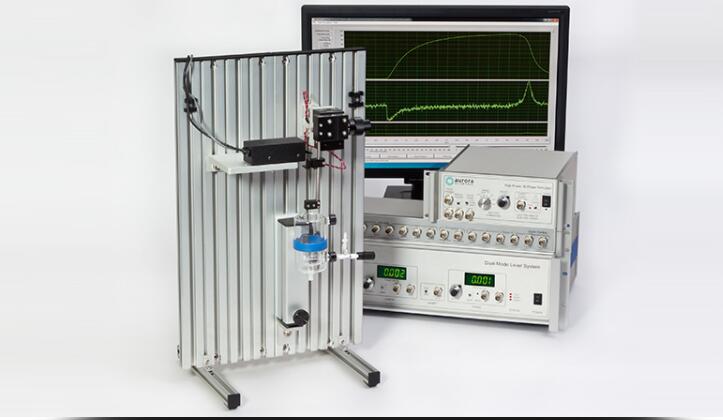
Overview
The 1200A isolated muscle test system is a leading solution for quantifying mechanical properties of isolated muscle. This system is ideal for a number of limb muscles including the TA, EDL, Soleus, Gastroc and for diaphragm strips and smaller muscle samples.
Included is apparatus designed for mouse muscle, complete with a water-jacketed bath and oxygenating bubbler. In addition, we include our flagship Dual-Mode muscle lever system along with a high-power field stimulator, data acquisition hardware and control and analysis software. Experimental setup, data collection and data analysis can all be done in a matter of minutes.
Parameters such as resting length, resting force, stimulation and the actual test protocol are all set using the control software. An extensive library of standard experimental protocols such as twitch, tetanus, fatigue, force-frequency, force-velocity, stiffness and work loops are also provided with each package.
The experimental apparatus is adjustable allowing the researcher to lower and raise the bath to attach and manipulate the muscle. Force and length are measured at only one attachment point, minimizing setup time and boosting productivity.
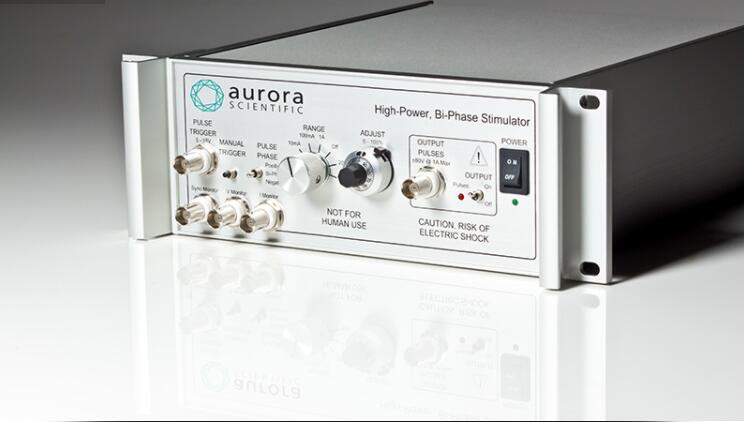
Go Beyond Isometric Measurements
Complete characterization of muscle function is achieved using our 300C series Dual-Mode muscle levers, a force transducer and fast length motor in one. Isotonic, eccentric and force-velocity protocols are easily accomplished and supplement basic isometric twitch and tetanus measurements.
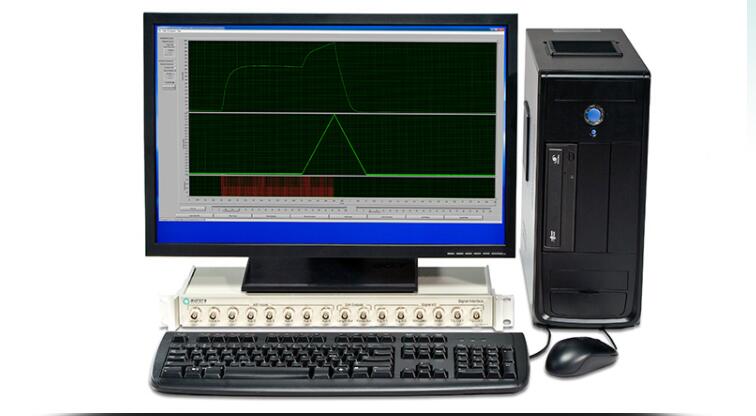
Lightning Fast Data Analysis
Experience high-throughput data analysis, including batch processing and multi-parameter calculations for hundreds of muscle samples within minutes. Downstream analysis can be completed with the Aurora Scientific DMC/DMA software or exported to your analysis program of choice.
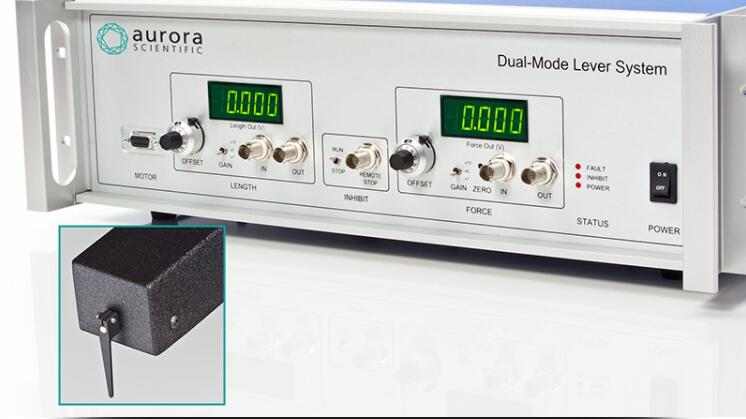
Precise and Robust Components
Aurora Scientific has a long history of supplying some of the most accurate transducers and muscle physiology components for life science research. Our legacy systems date back more than 30 years with many still in use today.
Standard Protocol Library
The protocol library includes a variety of muscle experiments for mouse in-vitro studies. Protocols include system operation and data acquisition settings optimized for sample type and measurement needs. Custom protocols can be added to streamline system operation with multiple lab members.
Features
- convenience of one test system capable of studying both mice and rats
- turn-key in-vitro functionality
- industry leading resolution of isolated muscle measurements
- fast data acquisition and analysis software for Windows
- simple to assemble, operate, and expand as your measurement needs change
- capable of more complex multi-measurement protocols
- peak forces accuracy up to 10N (1000g)
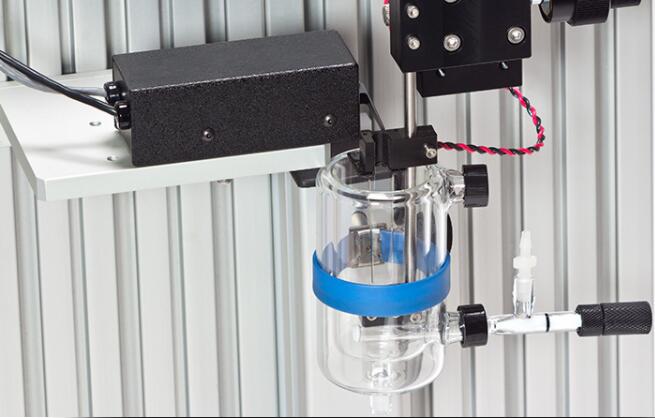
1200A – Easy to Use System Is an Invaluable Tool for Lab
CHALLENGE
In 2013 Aurora Scientific was approached by Dr. Espen Spangenburg at the University of Maryland about our 1200A test system for working with isolated EDL and soleus muscle taken from mice. Dr. Spangenburg studied the mechanisms of muscle metabolism and intended to make use of in-vitro techniques to perform his research. While Dr. Spangenburg was familiar with these types of experiments from his work with similar home built equipment used in graduate school, he needed something easy to use and reliable for his own lab.
SOLUTION
Though the system was essentially a standard configuration, the 1200A proved that it is an easy to use, turnkey system for measuring mechanics of intact excised muscle. Aurora Scientific provided Dr. Spangenburg with a robust, accurate system that was capable of being configured to fit his specific needs. The system was engineered to include an adjustable tissue bath and mounts to simplify experimental setup. In addition, we included our flagship Dual-Mode muscle lever enabling the control of both force and length for a gamut of experimental protocols. Aurora Scientific provided further technical support to Dr. Spangenburg’s students covering software use and best practices for using the system.
RESULTS
Dr. Spangenburg was easily able to set up and configure the equipment to his lab’s needs and obtained high quality contractile data immediately with the first muscle tested using the system. The ability to adjust the tissue bath and mounts to suit their needs provided an avenue for straightforward tissue attachment and Lo measurement for accurate and reproducible experimentation. Control and measurement of force and length allowed the lab to go beyond isometric measurement to test more complex muscle mechanics, such as eccentric and concentric contractions. The test system proved to be easy to use by both professor and student alike and was used by the lab for several subsequent studies. The 1200A enabled them to expand their research resulting in a number of publications and remains an essential piece of equipment for the lab to date.
Mitchell, Andrew S. et al. “Functional, morphological, and apoptotic alterations in letal muscle of ARC deficient mice.” Apoptosis 20.3 (2015): 310-326.
Moorwood, Catherine et al. “Isometric and eccentric force generation assessment of letal muscles isolated from murine models of muscular dystrophies.” Journal of Visualized Experiments 71 (2013): e50036-e50036.
Pinniger, Gavin J. et al. “letal muscle weakness caused by carrageenan-induced inflammation.” Muscle & Nerve 46.3 (2012): 413-420.
de Man, Frances S. et al. “Diaphragm muscle fiber weakness in pulmonary hypertension.” American Journal of Respiratory and Critical Care Medicine 183.10 (2011): 1411-1418.
Ramsey, Kathryn A. et al. “Fiber-type dependence of stretch-induced force enhancement in rat letal muscle.” Muscle & Nerve 42.5 (2010): 769-777.
Labeit, Siegfried et al. “Modulation of Muscle Atrophy, Fatigue and MLC Phosphorylation by MuRF1 as Indicated by Hindlimb Suspension Studies on MuRF1-KO Mice.” Journal of Biomedicine and Biotechnology 2010 (2010): 1-9.
Ottenheijm, Coen A.C. et al. “Altered contractility of letal muscle in mice deficient in titin's M-band region.” Journal of Molecular Biology 393.1 (2009): 10-26.


